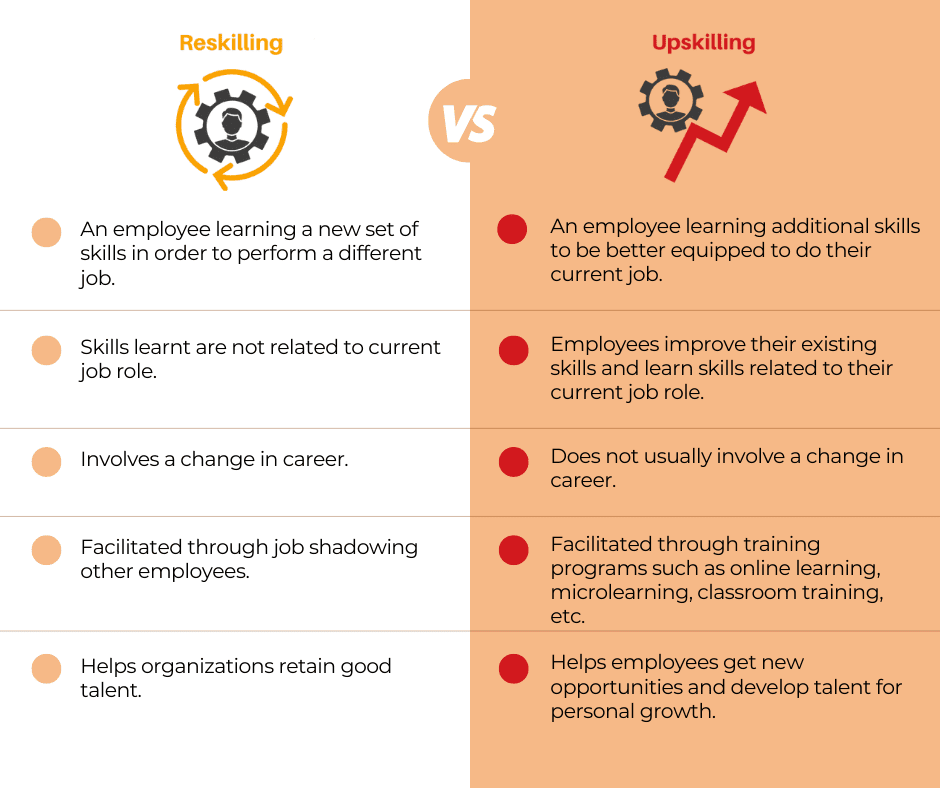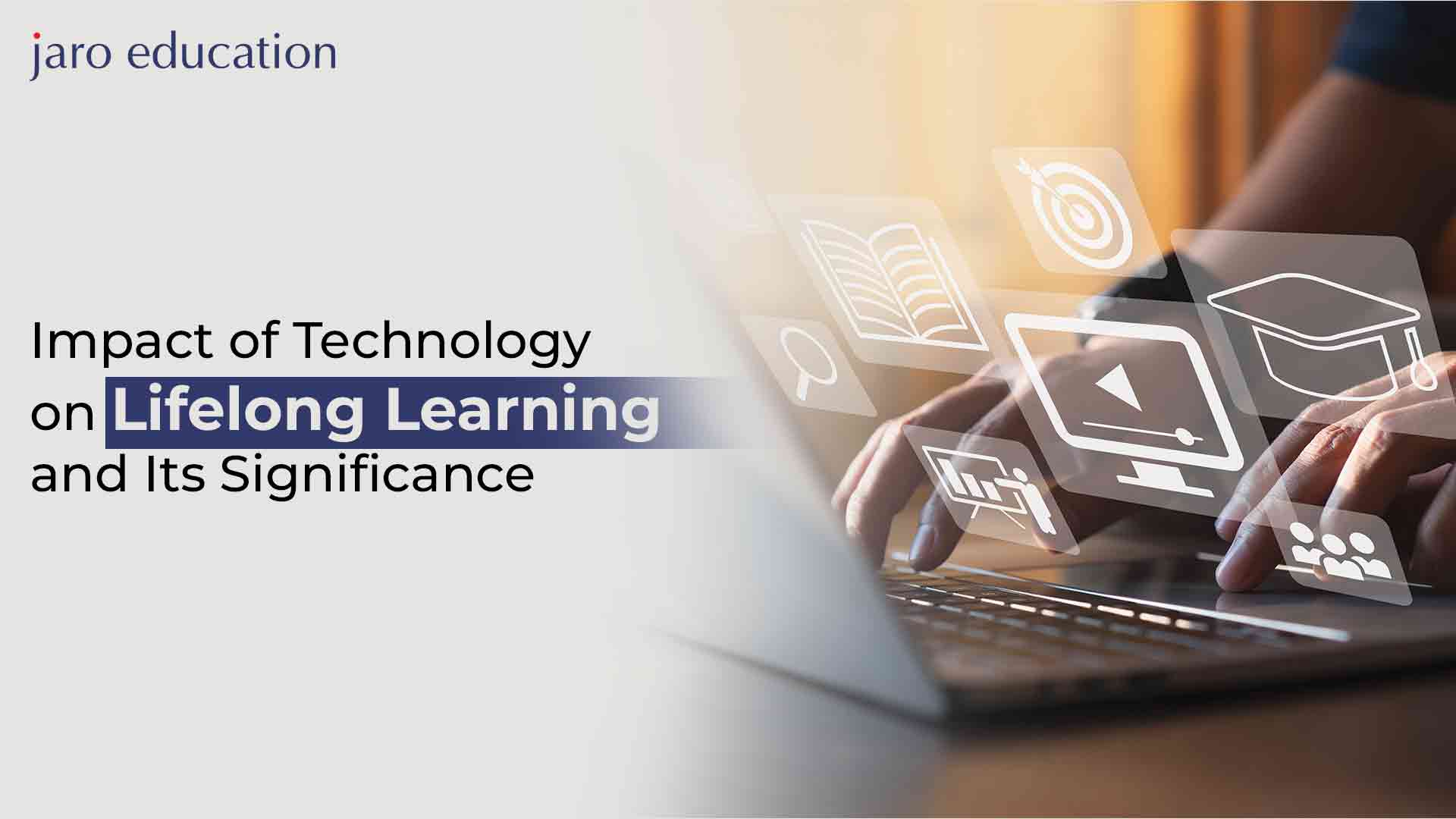The State of Upskilling in 2024: Navigating a Rapidly Changing Job Market
Table of Contents

- jaro education
- 18, June 2024
- 6:00 pm
In an era where the speed of technological change and economic landscapes is moving at lightning speed, never has lifelong learning been more crucial. The year 2024 has reinforced the need for professionals to take up upskilling in their respective areas as a must-do measure for not only securing their jobs but also an enabler towards creating space for future opportunities. Here is a deeper look at the state of upskilling, featuring key trends, challenges, and strategies that shape the workforce.
What is Upskilling?
Upskilling is the learning of new and relevant skills that will facilitate the performance required in a current job or the position that is required for elevation to higher positions within the industry. This has now taken a paramount role in a modern workplace, particularly in these times when technology and business environments are fast changing, with new skills and technologies being demanded by the workforce. Upskilling helps a person not only to be more employable but also to increase their career opportunities.

*naukri.com
How to Upskill Yourself?
Personalized upskilling, therefore, will be guided by the very career aspirations you have, the work that you currently undertake, and what the market will demand in the years to come. Here are a few ways through which you can find yourself upskilling effectively:
1. Identify Skills Gaps
First, you need to evaluate your current level of skills. It will have to be compared either with the job that you would love to hold in the future or with industry standards. This could be done through self-evaluation, peer and supervisory feedback, and even market research for available jobs. This will help identify the gaps and pin down exactly which skills need to be worked on.
2. Set Clear Learning Goals
Armed with knowledge of what exactly your interests and passions are, and the specific skills needed for particular fields, set specific learning goals for yourself. The SMART goal framework would be of much use: these should be Specific, Measurable, Achievable, Relevant, and Time-bound.
3. Choose the Right Learning Resources
Select learning platforms and resources that best match your learning style and the skills you need to develop. This could include online courses from platforms like Jaro Education Coursera or Udemy, workshops, seminars, webinars, or even books and articles. For more formal education, consider certificate programs or specialized training.
4. Apply Your Learning
Try to apply new skills in real-world scenarios as soon as possible. Whether through projects at work, freelancing gigs, or personal projects, applying what you learn not only reinforces your new skills but also helps you understand practical challenges and nuances.
5. Seek Feedback and Iterate
As you progress in your upskilling journey, continuously seek feedback from colleagues, mentors, or through self-assessment tools. Feedback will help you understand areas for improvement and refine your approach to learning. This iterative process is crucial for continuous improvement and success in upskilling.
6. Network and Collaborate
Engage with a community of learners or professionals in your field. Networking can provide support, insights, and opportunities to practice new skills. Collaboration on projects can also enhance learning through the exchange of ideas and techniques.
7. Stay Committed and Adaptable
Upskilling is a continuous process, so staying committed to your learning journey and being adaptable to new methods or changes in the industry is essential. This commitment will ensure you are always ready to meet the demands of your current role or future career opportunities.
By following these steps, you can effectively upskill yourself, enhancing your capabilities and ensuring you remain competitive and relevant in your professional field.
Emerging Trends in Upskilling
In this analysis, we will examine three major trends that change the attitude of people and firms towards upskilling.
1. Technology-Driven Learning Platforms
With the winds of digital transformation picking up pace, online learning platforms are becoming must-haves in the field of upskilling. Platforms such as Coursera, Jaro, Udemy, and LinkedIn Learning are all becoming niche players with their offerings of courses on artificial intelligence, machine learning, and blockchain technologies. These online learning platforms are integrating artificial intelligence into their curriculum to enrich learning experiences tailored to individual users’ needs. This integration fosters heightened engagement levels and enhances the effectiveness of learning programs.. This personalization assists in bridging the gap between generic content and specific learner requirements.
2. Employer-Sponsored Programs
Quite a number of organizations are shifting to recognize the value of continued learning and are investing considerably in the professional development of their staff. Companies like Google and Amazon have led with comprehensive reskilling programs covering a range of skills from basic cloud computing to advanced programming techniques. These programs aim not only to fill immediate skills gaps but also to provide growth roadmaps within the company to retain talent. Such initiatives demonstrate a strategic outlook toward workforce management, where upskilling is deemed crucial to both employee satisfaction and organizational success.
3. Micro-credentials and Badge Systems
The rise of micro-credentials, including digital badges and certificates, marks a significant shift in recognizing professional development. These credentials, which can be acquired more quickly than traditional degrees, offer a practical way to demonstrate mastery of specific skills. Highly valued in fields such as IT, project management, and data analysis, micro-credentials provide individuals with a means to verify their competencies in a way that is immediately recognizable to employers. This trend not only facilitates job mobility and career advancement but also meets the industry’s need for a flexible, skilled workforce capable of adapting to new challenges and technologies.
4. Adoption of Advanced Learning Technologies
The integration of cutting-edge technologies into learning management systems has dramatically transformed the upskilling landscape. Artificial Intelligence (AI) and Virtual Reality (VR) are at the forefront of this revolution, providing immersive and highly personalized learning experiences. For example, VR technology is being used extensively in the healthcare sector, allowing professionals to practice complex surgical procedures in a virtual, risk-free environment. This not only enhances their technical skills but also boosts their confidence, enabling them to perform real-life operations with greater precision and care.
5. Corporate Learning Cultures
Recognizing the strategic value of continuous learning, an increasing number of organizations are embedding a culture of development within their corporate ethos. This trend is evident in the structural changes within HR policies to support ongoing professional growth. Many companies are now offering designated ‘learning days’ where employees can focus solely on personal and professional development. Additionally, the establishment of innovation hubs within companies provides a space for employees to experiment with new technologies and ideas. Such initiatives not only foster a proactive learning environment but also drive innovation and creativity, keeping companies competitive in their respective industries.
6. Focus on Soft Skills
The demand for soft skills training has seen a significant uptick alongside the need for technical expertise. In today’s multifaceted work environments, skills such as critical thinking, effective communication, and leadership are increasingly valued. Upskilling programs are now incorporating these soft skills to prepare employees not only to manage tasks but also to lead teams and projects. The emphasis on these skills reflects a broader understanding that technical know-how must be complemented by the ability to navigate complex interpersonal dynamics, adapt to changing environments, and inspire teams, ensuring holistic professional development.
Challenges in Upskilling
As professional development evolves, various challenges impede the effectiveness and reach of upskilling initiatives. These issues highlight the complexity of implementing a successful upskilling strategy that benefits all sectors of society and aligns with market demands. Here’s a deeper dive into the main challenges faced in the upskilling domain.
1. Access and Inclusivity
Despite the widespread availability of online courses and resources, significant barriers still prevent equal access to these educational tools, especially in underrepresented and low-income communities. The digital divide, which refers to the gap between individuals who have access to modern information and communication technologies and those who do not, remains a formidable challenge. This divide not only limits the ability of individuals from disadvantaged backgrounds to participate in online learning but also perpetuates existing inequalities in education and career opportunities.
2. Keeping Pace with Rapid Change
The rapid development and implementation of new technologies and methodologies pose a significant challenge for workers striving to stay current with industry standards and practices. This is especially prevalent in fast-evolving sectors such as technology and healthcare, where continual updates in knowledge and skills are necessary. The pace at which new information emerges can overwhelm even the most diligent learners, making it difficult to maintain current competencies and master new ones effectively.
3. Measurement of ROI
Determining the return on investment (ROI) for upskilling programs is a complex issue for both individuals and organizations. It is often challenging to directly correlate specific training initiatives with improvements in job performance or career progression. This difficulty can affect how both employees and employers perceive the value of upskilling efforts. Without clear evidence of the benefits, motivation to invest time and resources into such programs can wane, potentially undermining long-term commitment to continuous professional development.
4. Economic and Geographical Disparities
Although online platforms have democratized access to education to a certain extent, significant barriers still remain. Economic challenges, such as the affordability of courses and the requisite technology, disproportionately affect individuals in economically disadvantaged or rural areas. These regions often suffer from inadequate access to high-speed internet, making it difficult for residents to engage with digital learning platforms effectively. This digital divide not only perpetuates but also exacerbates existing disparities within the workforce, leading to a widened skills gap that impacts regional economic development and personal career growth.
5. Overwhelm and Information Overload
In an age where information is abundant, the sheer volume of available courses and educational resources can be overwhelming. Learners often find themselves at a crossroads, unable to determine which path will best advance their careers. This situation calls for more structured learning pathways and clearer outcome visibility to aid individuals in making informed decisions. Educational providers need to offer more than just content; they must guide learners through the maze of options with tailored advice and predictive career planning tools that align learning outcomes with real-world career advancements.
6. Aligning Skills with Market Needs
The rapid pace of technological and economic change means that job market demands are continually evolving. There is frequently a noticeable lag between these emerging needs and the development of upskilling programs that can adequately address them. This delay often leads to a misalignment between the skills workers are learning and those that are in demand. For industries and economies to thrive, this gap must be bridged efficiently. Continuous collaboration between industry leaders, educational institutions, and policymakers is essential to ensure that learning programs are timely, relevant, and directly linked to the current and future needs of the job market.
Addressing these challenges requires a multi-faceted approach that includes policy intervention, investment in educational technology, and a commitment from corporate entities to invest in the long-term development of their workforce. By acknowledging and tackling these barriers, stakeholders can enhance the effectiveness of upskilling efforts and ensure that they lead to equitable opportunities for all individuals, irrespective of their economic or geographical circumstances.
Strategies for Effective Upskilling
In response to the challenges of upskilling, various strategies have been developed to enhance the effectiveness and reach of professional development initiatives. These strategies not only aim to address the disparities and inefficiencies but also to leverage technological advancements and collaborative efforts to create a more inclusive and dynamic learning environment. Here’s an exploration of some key strategies that are proving effective in 2024.
1. Lifelong Learning Mindset
Embracing a lifelong learning mindset is fundamental for ongoing professional growth. Individuals should view upskilling not as a sporadic or one-time effort but as a continuous journey that complements their career trajectory. This mindset encourages adaptability and resilience, allowing professionals to smoothly transition into new roles or adapt to shifts within their existing job scopes. By consistently seeking to learn and improve, individuals can stay relevant in their fields and be better prepared for future changes.
2. Leveraging Community and Networking
Building and engaging with a professional network is a crucial part of upskilling. Networking with peers, mentors, and industry leaders can open up new learning opportunities and provide insights into emerging trends and skills. Participating in community learning events such as workshops, seminars, and industry conferences is invaluable for gaining exposure to new ideas and practices. These interactions not only enhance learning but also foster relationships that can be beneficial for career development and collaborative opportunities.
3. Strategic Planning and Goal Setting
Effective upskilling requires clear and strategic goal setting. Professionals should define their learning objectives based on their career aspirations and the specific needs of their employers. This approach ensures that the upskilling efforts are directly aligned with personal and organizational goals, leading to more focused and applicable learning. Setting specific, measurable, achievable, relevant, and time-bound (SMART) goals can help maintain motivation and provide a clear pathway to achieving professional milestones. Additionally, it allows for better measurement of progress and outcomes, making it easier to assess the return on investment in personal and professional development.
4. Customized Learning Paths
The one-size-fits-all approach to education is becoming outdated, especially in the context of professional development. To address this, more sophisticated diagnostic tools are now being utilized to evaluate an individual’s current skill set and identify specific areas for improvement. This information is then used to tailor learning paths that align closely with a person’s career aspirations as well as the strategic needs of their organization. Such customized plans ensure that upskilling is not just a peripheral activity but a core component of career development, making it more relevant and efficient for each learner.
5. Integration of Learning and Work
Innovative companies are increasingly blurring the lines between working and learning. This integration is facilitated by the use of microlearning modules, which are brief, highly focused content deliveries designed to fit seamlessly into the flow of daily work. Employees can engage with these modules on their smartphones or other devices during breaks or even in the workflow, applying new skills almost immediately. This method not only makes learning more convenient but also helps in reinforcing new knowledge through immediate application, enhancing retention and effectiveness.
6. Public-Private Partnerships
Recognizing the limitations of any single sector in addressing the broad challenges of upskilling, there has been a significant move towards forming public-private partnerships. These collaborations involve governments, educational institutions, and private sector companies coming together to create educational programs that are directly aligned with current and emerging market needs. These partnerships help in developing curricula that are not only industry-relevant but also accessible, with financial and structural support that makes these opportunities available to a wider audience. By doing so, they bridge the gap between education and employment, ensuring that the workforce is prepared for future demands.
These strategies represent a proactive and dynamic approach to professional development, focusing on personalization, practical application, and collaboration. By implementing these strategies, stakeholders can effectively tackle the challenges of upskilling, making continuous learning a more integral and effective part of the professional landscape in 2024.
Conclusion
As we further investigated, upskilling emerged as one of the important skills in the negotiation of the intricacies of the job market come 2024. Understanding current trends and challenges and setting up strategic approaches towards professional development can place an individual and an organization favorably in the new dynamics. The adventure of learning never ends, it just transforms with our needs, and the demands that the world requires from us.











